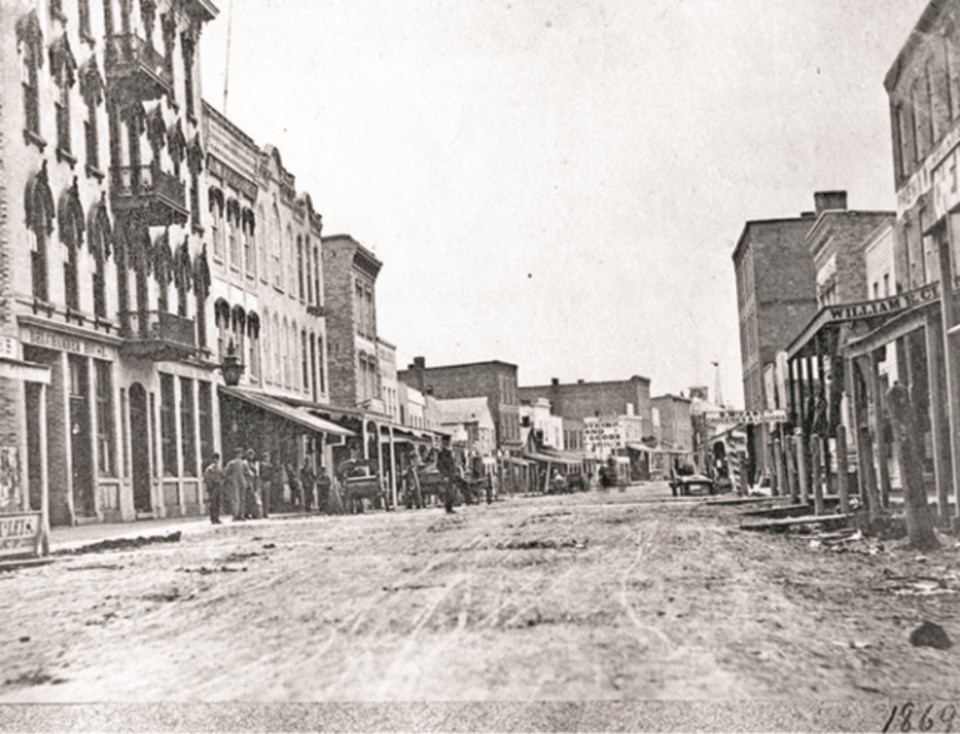Phil Egan & George Mathewson
The sun rose over Sarnia into a clear, blue sky on the morning of July 1, 1867.
That was the day the British North America Act took effect, forging Ontario, Quebec, Nova Scotia and New Brunswick into the new Dominion of Canada.
It was the day parishioners would gather on Christina Street to lay down the cornerstone of St. Andrew’s Church.
And it was the day — much anticipated by the town’s nearly 3,000 residents — to gather downtown and celebrate with the very first Canada Day, or Dominion Day as it was then known.
Weeks before, notices were posted around town calling for a public meeting to discuss the party plans. The mayor, after taking a chair before a “very respectable gathering” of townspeople, called for a day of music, parading and uniformed marching men. A committee was struck to make it happen.
Sarnia’s first Canada Day dawned sunny and hot. Though a Monday, all work was cancelled, the streets were dressed in bunting, and flags hung from every public building and ship moored in the bay.
The celebration was fuelled by grants of $300 and $200 from the county and town councils respectively,
As the sun climbed higher, a huge crowd began to flood the downtown from neighbouring regions and Port Huron across the river. Not since the Prince of Wales’ visit seven years earlier had so many people congregated.
At 10:30 a.m., two Moore Infantry Companies and the Sarnia Infantry and Artillery Company assembled at the Town Hall. They marched to the parade ground under the command of Lt. Col. Davis, and the Sarnia Cornet Band. There, two Grand Trunk Rifle Companies from Point Edward joined them under the command of Major Wily.
Military manoeuvres followed, after which the companies formed into line and the “feu-de-joie” was fired. This celebratory ritual involved each soldier firing into the air in succession. Three cheers went up for the Queen, and three more for the new Dominion.
From the parade ground, the progression headed down Christina Street, up George to Front, down to Francis (later Davis) Street, and then back by Christina to the Market Square.
Leading the way was the Sarnia Band, followed by the Volunteers with banners flying, followed by the town clerk in a carriage bearing the Queen’s Proclamation.
Next came a carriage holding four young virgins dressed in white, each representing one of the four provinces uniting in Confederation.
More carriages followed with dignitaries from Sarnia and Port Huron, including clergy and veterans of the War of 1812, followed by the Port Huron and Sarnia Fire Brigades.
The official ceremonies came to a close with speeches by the mayor and Alexander Mackenzie, Sarnia’s favourite political son.
Some residents then adjourned to the local hotels for a liquid celebration.
